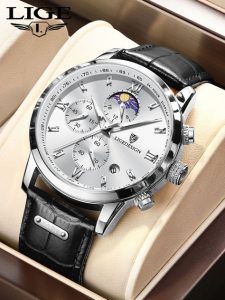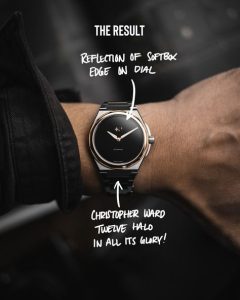Uncategorized
How to Care for Your Watch: A Complete Guide
A quality watch is more than just a tool for telling time; it’s a piece of craftsmanship that reflects your personal style and, in some cases, can be a valuable heirloom passed down through generations. Whether you’re wearing a luxury mechanical timepiece or a sleek quartz watch, proper care is essential to maintain its functionality and appearance. At 360bestelitend.com, we’ve put together a comprehensive guide on how to care for your watch, ensuring it stays in top condition for years to come.
1. Regular Winding and Wear: Keeping the Movement Running
For mechanical watches (both manual and automatic), keeping the watch running smoothly requires regular winding or consistent wear. Here’s how to care for different types of movements:
- Manual Mechanical Watches: These watches require manual winding to store energy in the mainspring. It’s recommended to wind your watch once a day at the same time, typically in the morning, to ensure it keeps ticking. If you don’t wear your manual watch daily, it’s best to wind it every few days to keep the movement active.
- Automatic Mechanical Watches: These watches are powered by the natural motion of your wrist. However, if you don’t wear your automatic watch for a while, it may stop. To avoid this, simply place the watch on a watch winder, which will simulate wrist movement and keep the watch running smoothly.
- Quartz Watches: Quartz watches are battery-powered and don’t require winding. However, the battery will need to be replaced every couple of years, depending on the watch. If you wear your quartz watch regularly, the battery should last longer.
2. Storing Your Watch: Protecting It When Not in Use

Proper storage is essential to preserve the condition of your watch. Whether you’re storing a luxury timepiece or a daily wearer, follow these guidelines to keep your watch in top shape:
- Use a Watch Box: When you’re not wearing your watch, keep it in a cushioned watch box or case. This protects it from dust, dirt, and scratches, while also preventing accidental drops or damage. For automatic watches, consider investing in a watch winder to keep the movement running.
- Avoid Storing in Direct Sunlight: Prolonged exposure to direct sunlight or heat can damage both the dial and the movement of your watch. Always store your watch in a cool, dry place away from excessive light or humidity.
- Avoid Magnets: Watches, especially mechanical ones, can be affected by magnetic fields. Avoid placing your watch near devices like phones, computers, or speakers, as magnets can disrupt the movement and cause it to run inaccurately.
3. Water Resistance: Understanding Your Watch’s Limits
Many watches today are water-resistant, but it’s important to understand the limits of this resistance. Not all water-resistant watches can be worn while swimming or diving. Always check the water resistance rating of your watch before exposing it to moisture. Here are some common ratings:
- 3 ATM/30 Meters (100 feet): Suitable for splashes and brief exposure to water, such as washing hands or getting caught in the rain. Not safe for swimming or showering.
- 5 ATM/50 Meters (165 feet): Can handle swimming in shallow water or snorkeling, but not deep diving.
- 10 ATM/100 Meters (330 feet): Safe for swimming, snorkeling, and light recreational diving. Not suitable for deep dives.
- 20 ATM/200 Meters (660 feet): Suitable for serious diving and high-pressure water activities.
- 100 ATM/1000 Meters and above: Professional diving watches, able to withstand extreme depths.
If your watch is water-resistant, make sure the crown is fully pushed in or screwed down when exposed to water. Never operate the pushers or crown when the watch is submerged, as this can compromise its water resistance.
4. Cleaning Your Watch: Maintaining Its Shine and Function
Keeping your watch clean is essential for both its appearance and longevity. Here’s how to clean both the watch exterior and the strap:
Cleaning the Watch Case and Crystal:
- Wipe Regularly: Use a soft, lint-free cloth to gently wipe away dirt, fingerprints, and moisture from the case and crystal. This will keep your watch looking sharp and prevent buildup.
- Use a Soft Brush: If your watch case is particularly dirty, use a soft brush (such as a toothbrush) to gently remove debris from the crevices. Be sure to use gentle strokes to avoid scratching the surface.
- Avoid Harsh Chemicals: When cleaning your watch, avoid harsh chemicals or abrasive materials that could damage the finish. For tough grime, a mixture of mild soap and warm water can be used, but make sure the watch is water-resistant before using this method.
Cleaning the Watch Band:
- Metal Bands (Steel, Titanium, etc.): To clean metal watch bands, you can use a soft cloth and a mild soap solution. For a deeper clean, use a toothbrush to gently scrub between the links. Afterward, rinse the band with water and dry it thoroughly.
- Leather Bands: Leather bands require extra care to prevent drying or cracking. Use a damp cloth to wipe off dirt, and never soak a leather strap in water. Occasionally, treat leather straps with a conditioner designed for leather to keep them supple and prevent cracking.
- Rubber and Silicone Bands: These bands can be cleaned with mild soap and water. Use a soft cloth to dry them thoroughly afterward.
5. Protecting Your Watch from Scratches and Impact
A watch can easily be scratched or damaged if exposed to harsh environments or rough handling. To avoid this:
- Be Mindful of Your Watch’s Surroundings: Avoid wearing your watch when doing activities where it could get scratched or knocked, such as during intense workouts or when handling sharp objects.
- Use Protective Covers: Some people opt to use screen protectors or crystal covers for their watches, especially if they have a delicate or high-value timepiece. These can provide extra protection from scratches or impacts.
- Avoid Extreme Temperature Fluctuations: Extreme heat or cold can negatively affect the movement of your watch, causing it to run inaccurately or even damage the internal components. Keep your watch in a controlled environment, away from extreme temperatures.
6. Regular Servicing: Keeping Your Watch in Top Condition
To ensure that your watch continues to run smoothly, it’s essential to have it serviced regularly, especially if it’s a mechanical timepiece. Most watchmakers recommend having your watch serviced every 3-5 years to keep it in optimal condition.
- Mechanical Watches: Regular servicing is especially important for mechanical watches, as the lubricants inside the movement can break down over time. A professional servicing will ensure that the movement remains properly lubricated, cleaned, and calibrated.
- Battery Changes: For quartz watches, it’s essential to change the battery on time to prevent leaks. Watch batteries usually last 1-3 years, depending on the model. Always have the battery replaced by a professional to ensure the watch’s seals remain intact and its water resistance is not compromised.
7. Avoiding Common Mistakes

Here are some common mistakes to avoid to keep your watch in good shape:
- Setting the Time in the Wrong Direction: For many mechanical watches, setting the time backwards can damage the movement. Always set the time by turning the crown clockwise.
- Forgetting to Screw in the Crown: If your watch has a screw-down crown for water resistance, always ensure it is tightly screwed in before exposing it to water.
- Over-Winding: Although most modern mechanical watches are designed to handle over-winding, it’s still a good habit to stop winding once the mainspring is fully wound. Excessive winding can cause unnecessary stress on the movement.
Conclusion: Preserving the Longevity of Your Watch
Proper care and maintenance are crucial for keeping your watch running smoothly and looking its best. Whether you own a luxurious mechanical timepiece or a sleek quartz watch, following these guidelines will ensure that your timepiece remains in top condition for years. At 360bestelitend.com, we offer a curated collection of watches for every style, and we encourage all of our customers to treat their watches with the care they deserve to preserve their functionality, value, and beauty.
By taking the time to care for your watch, you are not just protecting an object, but also preserving a piece of history, craftsmanship, and personal style.

